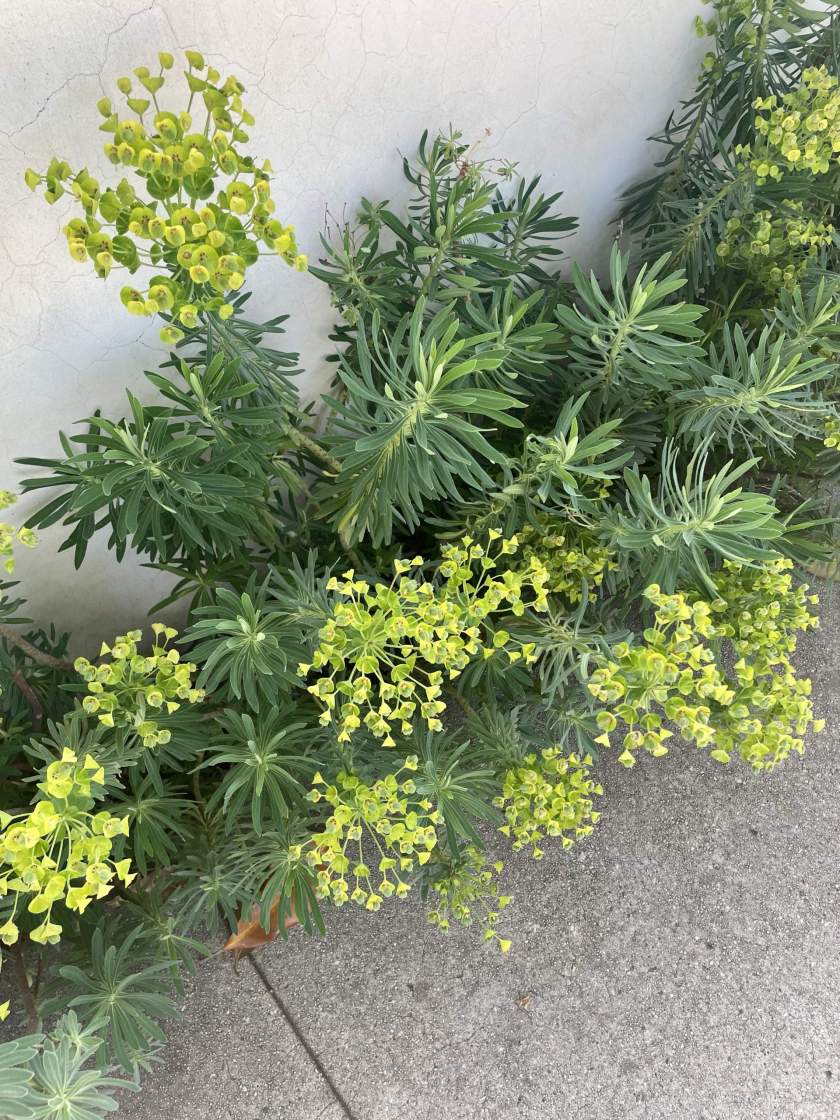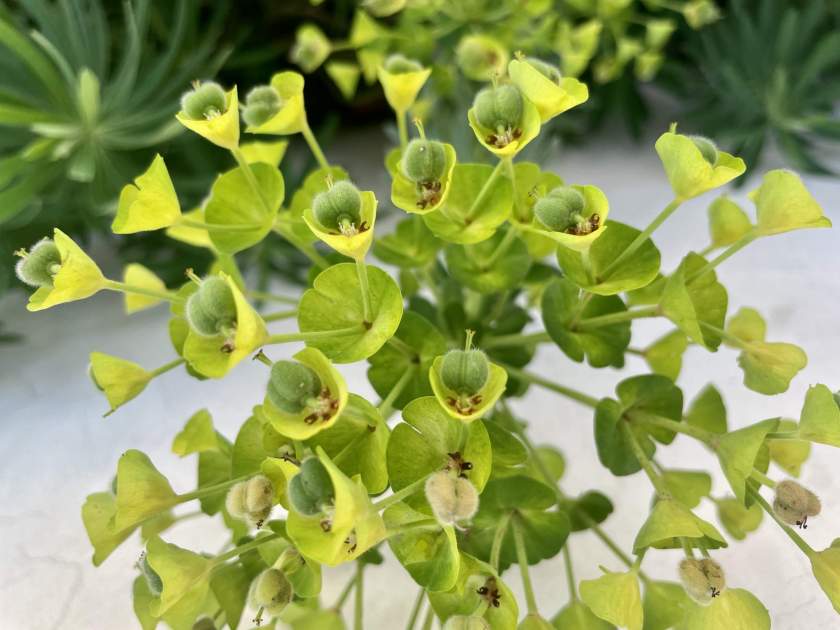Euphorbia characias is a remarkable perennial plant that brings a unique beauty to any garden or landscape. Originating from the Mediterranean region, this stunning plant belongs to the Euphorbiaceae family and is known for its striking architectural form and vibrant flowers.
Euphorbia characias, commonly referred to as Mediterranean Spurge, boasts a rich history and has been cultivated for centuries. Its natural habitat includes rocky slopes, coastal areas, and dry meadows, making it well-adapted to a variety of growing conditions.

How to grow Euphorbia characias:
To successfully grow and care for Euphorbia characias, consider the following guidelines:
Select a sunny spot in your garden that receives at least six hours of direct sunlight per day. Euphorbia characias thrives in full sun and appreciates warmth, so choose a location that provides optimal light exposure. Ensure the soil is well-draining and moderately fertile. Sandy or loamy soil types are ideal for this plant. Good drainage is crucial to prevent waterlogging and the potential for root rot.
Once established, Euphorbia characias is relatively drought-tolerant and requires minimal watering. Allow the soil to dry out between waterings to prevent overwatering. However, during the initial stages of growth, it’s important to provide regular watering to help the plant establish its root system. Euphorbia characias is a low-maintenance plant. Trim back any dead or damaged stems in early spring to encourage new growth. Wearing gloves is advisable when handling this plant, as its milky sap may cause skin irritation.
Euphorbia characias produce clusters of showy flowers in various colors, including shades of yellow, green, or purple. The flowers bloom from late spring to early summer, creating a stunning display. Once the flowering period ends, you can remove the spent flower stalks to maintain a tidy appearance.
Winter Care: Euphorbia characias is generally hardy, but in colder regions, it may benefit from protection during harsh winters. Applying a layer of mulch around the base of the plant can help insulate the roots and protect them from freezing temperatures.
It’s important to note that Euphorbia characias contains a milky sap that can be toxic and may cause skin and eye irritation. When handling the plant, use caution and consider wearing protective gloves.
With its unique architectural form, vibrant flowers, and adaptability to various growing conditions, Euphorbia characias is a captivating addition to any garden or landscape. Embrace the charm of this Mediterranean beauty and enjoy its resilience and striking presence year after year.




